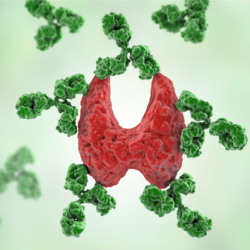The DASH diet (Dietary Approaches to Stop Hypertension) is a dietary approach specifically designed to help to lower blood pressure and improve overall health. By focusing on nutrient-rich foods and reducing sodium intake, this diet has gained popularity as an effective way to manage hypertension and improve overall health. In this article, we’ll explore the principles, benefits and guidelines of the DASH diet, as well as practical tips and meal ideas for incorporating it into your lifestyle.
What is the DASH diet?
The DASH diet, or Dietary Approaches to Stop Hypertensionis a well-researched eating plan developed by the National Heart, Lung and Blood Institute (NHLBI) to reduce high blood pressure. It emphasises the consumption of fruit, vegetables, whole grains, lean proteins and low-fat dairy products, while limiting the intake of saturated fats, cholesterol and sodium.
How does this eating plan work?
This way of eating to lower blood pressure works by combining essential nutrients while minimising sodium intake. Since sodium is a factor contributing to hypertension, reducing its intake can relax the blood vessels and lighten the load on the cardiovascular system. What’s more, the DASH diet promotes a balanced, nutritious diet that supports general health and weight management.
What the science says
Studies have shown that the DASH diet is effective in lowering blood pressure. It can also help with weight loss and diabetes management.
What are the benefits of the DASH diet?
The DASH diet offers a number of benefits beyond blood pressure management. Here are some of the main benefits:
Weight loss
According to publications in the Journal of Nutrition and Metabolism, following the DASH diet is associated with an average reduction in body weight of 4.1 kg over a 12-week period. This reduction is considerable, especially when compared with control diets.
Cardiovascular health
Studies validated by the American Heart Association indicate that the DASH diet can lead to a reduction in systolic blood pressure of between 8 and 14 points. In addition, a systematic review of clinical studies published in the Journal of the American College of Cardiology highlights that this diet helps to lower LDL (low-density lipoprotein) cholesterol levels by 3 to 5.5%.
Managing diabetes through diet
A meta-analysis published in PLOS Medicine shows that people who follow the DASH diet enjoy an average 1.5% improvement in their HbA1c levels, a long-term indicator of glycaemic control.
Controlling blood pressure
The National Heart, Lung, and Blood Institute (NHLBI) has shown that the DASH diet can reduce systolic blood pressure by 11.4 mm Hg and diastolic blood pressure by 5.5 mm Hg in just two weeks, particularly when combined with a reduction in sodium intake.
Other medical conditions
The DASH diet is not only beneficial for weight loss, heart health and diabetes management. It has also demonstrated positive effects in the treatment of other conditions, such as gout and chronic kidney disease, according to a study published in the Journal of Renal Nutrition.
In conclusion, the benefits of the DASH diet are firmly rooted in a broad empirical base. Incorporating these data into any evaluation or discussion of this dietary approach substantially enriches understanding of its benefits, and provides a solid scientific foundation for health recommendations.
How do I follow the blood pressure lowering diet?
To follow this diet, it’s important to understand the recommended daily portions for each food group and to make thoughtful choices. Here are a few tips on how to incorporate the DASH diet into your lifestyle.
Basic principles of the DASH diet
- Meal planning: Plan your meals in advance to ensure a balanced and nutritious diet.
- Food groups: Familiarise yourself with the recommended portions of fruit, vegetables, cereals, protein and dairy products.
- Portion control: Pay attention to quantities to avoid overeating.
- Limit sodium: Reduce the use of added salt and choose low-sodium options whenever possible.
What foods should I eat to lower blood pressure naturally?
The DASH diet categorises foods into different groups according to their nutritional value and their impact on blood pressure. Here are the main food categories of the DASH diet:
- Fruit: Apples, oranges, berries, melons, etc.
- Vegetables: Green vegetables, carrots, broccoli, tomatoes, peppers, etc.
- Cereals: Wholegrain cereals, brown rice, oats, whole-wheat bread, quinoa, etc.
- Dairyproducts: Skimmed or low-fat milk, yoghurt, cheese, etc.
Example of a DASH diet meal plan
Here is an example of a DASH diet meal plan for one day:
- Breakfast: Oatmeal with berries and low-fat yoghurt.
- Snack: Carrot sticks with hummus.
- Lunch: Grilled chicken salad with greens, tomatoes, cucumber and balsamic vinaigrette.
- Snack: Apple slices with almond butter.
- Dinner: Baked salmon with quinoa and steamed vegetables.
- Dessert: Fresh fruit salad.
DASH diet recipes and meal ideas
The DASH diet offers a wide range of tasty and healthy recipes. Here are a few ideas for meals that are compatible with the DASH diet:
- Quinoa-stuffed peppers with black beans and vegetables.
- Grilled chicken breast with roasted sweet potatoes and steamed broccoli.
- Greek yoghurt parfait with fresh fruit and a dash of granola.
- Spinach and feta omelette with a slice of whole wheat bread.
The DASH diet and exercise
Physical activity is an essential part of a healthy lifestyle. When combined with the DASH diet, regular exercise can reinforce the benefits and contribute to overall well-being. Aim for at least 150 minutes of moderate-intensity aerobic activity per week, as well as muscle-strengthening exercises.
The DASH diet for weight loss
The DASH diet can be an effective approach to weight loss when combined with portion control and calorie moderation. By focusing on nutrient-rich foods and limiting calorie-rich options, it is possible to lose weight gradually and sustainably.
The DASH diet for hypertension
This way of eating is specifically designed to lower blood pressure. By reducing sodium intake and incorporating heart-healthy foods, people can effectively manage hypertension and reduce their risk of cardiovascular disease.
The DASH diet for diabetes
For people with diabetes, the DASH diet can play an essential role in managing blood sugar levels. The emphasis on whole grains, fruit and vegetables offers a balanced approach to carbohydrate intake and supports stable blood sugar control.
DASH diet for heart health
This eating pattern promotes heart health by focusing on nutrients that contribute to healthy cholesterol levels and overall cardiovascular well-being. By following the DASH diet, individuals can reduce their risk of heart disease and related complications.
The DASH diet and other health conditions
In addition to its benefits for hypertension, the DASH diet can also be beneficial for other health conditions such as kidney disease and gout. However, it is essential to consult a health professional to adapt the diet to specific needs and considerations.
The naturopath’s opinion on the DASH diet
As a naturopath and Paleo-AIP food coach, I’m constantly looking for ways to optimise health and well-being through nutrition. The DASH diet, which focuses on reducing hypertension, intrigues me for several reasons.
On the one hand, the DASH diet shares many fundamental principles with the Paleo-AIP approach, notably the importance of eating vegetables, high-quality proteins and healthy fats. However, it differs on points such as the consumption of cereals and dairy products, which are generally avoided or limited in a Paleo-AIP framework.
What is admirable about the DASH diet is its focus on dietary changes that support cardiovascular health. It has been proven that this diet can significantly reduce hypertension, which is a major plus. However, as a Paleo-AIP practitioner, I must point out that the DASH diet does not take into account food sensitivities and autoimmune reactions that could be exacerbated by some of the foods allowed on this diet, such as legumes and dairy products.
In my practice, I find that the DASH diet can be an excellent introduction to a more conscious and balanced diet, especially for those coming from Western diets rich in processed foods. However, for a more personalised approach tailored to individual needs, especially in the presence of autoimmune conditions or food sensitivities, I often recommend exploring more specific diets such as the Paleo-AIP.
FAQ
What is the DASH diet?
-
- Answer : The DASH diet is a dietary approach designed to lower blood pressure and improve overall health by focusing on nutritious foods and reducing sodium intake.
What are the benefits of the DASH diet?
-
- Answer: The DASH diet offers benefits such as weight loss, heart health and diabetes management.
How do I follow the DASH diet?
-
- Answer: To follow the DASH diet, it’s important to plan meals, know the recommended portions for the different food groups and limit sodium intake.
What foods are included in the DASH diet?
-
- Answer: The DASH diet includes fruit, vegetables, wholegrain cereals, lean proteins and low-fat dairy products.
Food sources:
- Devries S. Integrative approaches to the management of patients with heart disease. In: Libby P, Bonow RO, Mann DL, Tomaselli GF, Bhatt DL, Solomon SD, eds. Braunwald’s Heart Disease: A Textbook of Cardiovascular Medicine. 12th ed. Philadelphia, PA: Elsevier; 2022:chap 34.
- Bakris GL, Sorrentino MJ. Systemic hypertension: mechanisms, diagnosis, and treatment. In: Libby P, Bonow RO, Mann DL, Tomaselli GF, Bhatt DL, Solomon SD, eds. Braunwald’s Heart Disease: A Textbook of Cardiovascular Medicine. 12th ed. Philadelphia, PA: Elsevier; 2022:chap 26.
- https://pubmed.ncbi.nlm.nih.gov/27863813/
- https://pubmed.ncbi.nlm.nih.gov/16884659/
- https://pubmed.ncbi.nlm.nih.gov/9099655/
- https://pubmed.ncbi.nlm.nih.gov/26934541/
- https://pubmed.ncbi.nlm.nih.gov/26622263/
- National Heart, Lung, and Blood Institute website. DASH eating plan. www.nhlbi.nih.gov/education/dash-eating-plan. Updated December 29, 2021. Accessed November 29, 2022.





